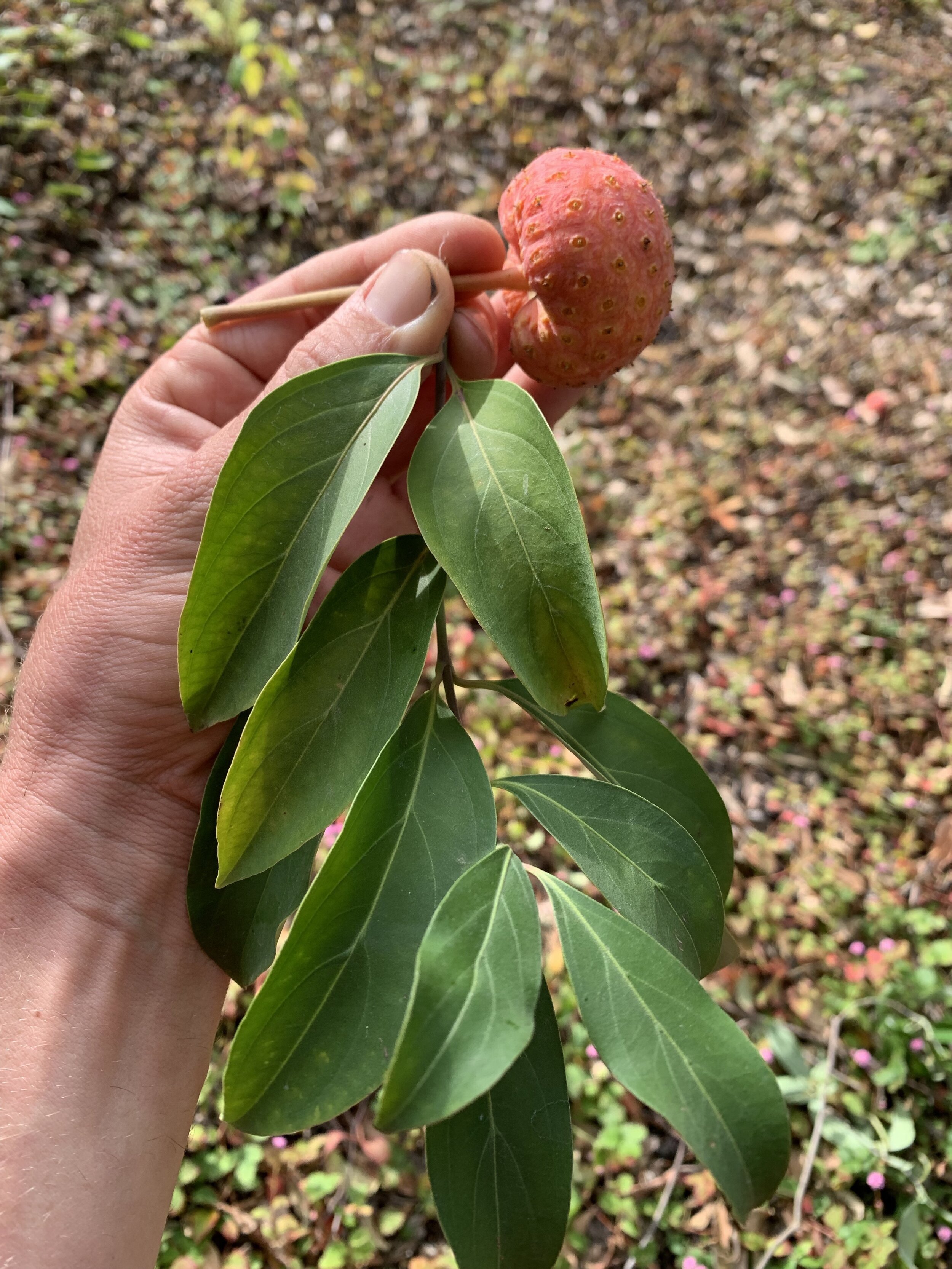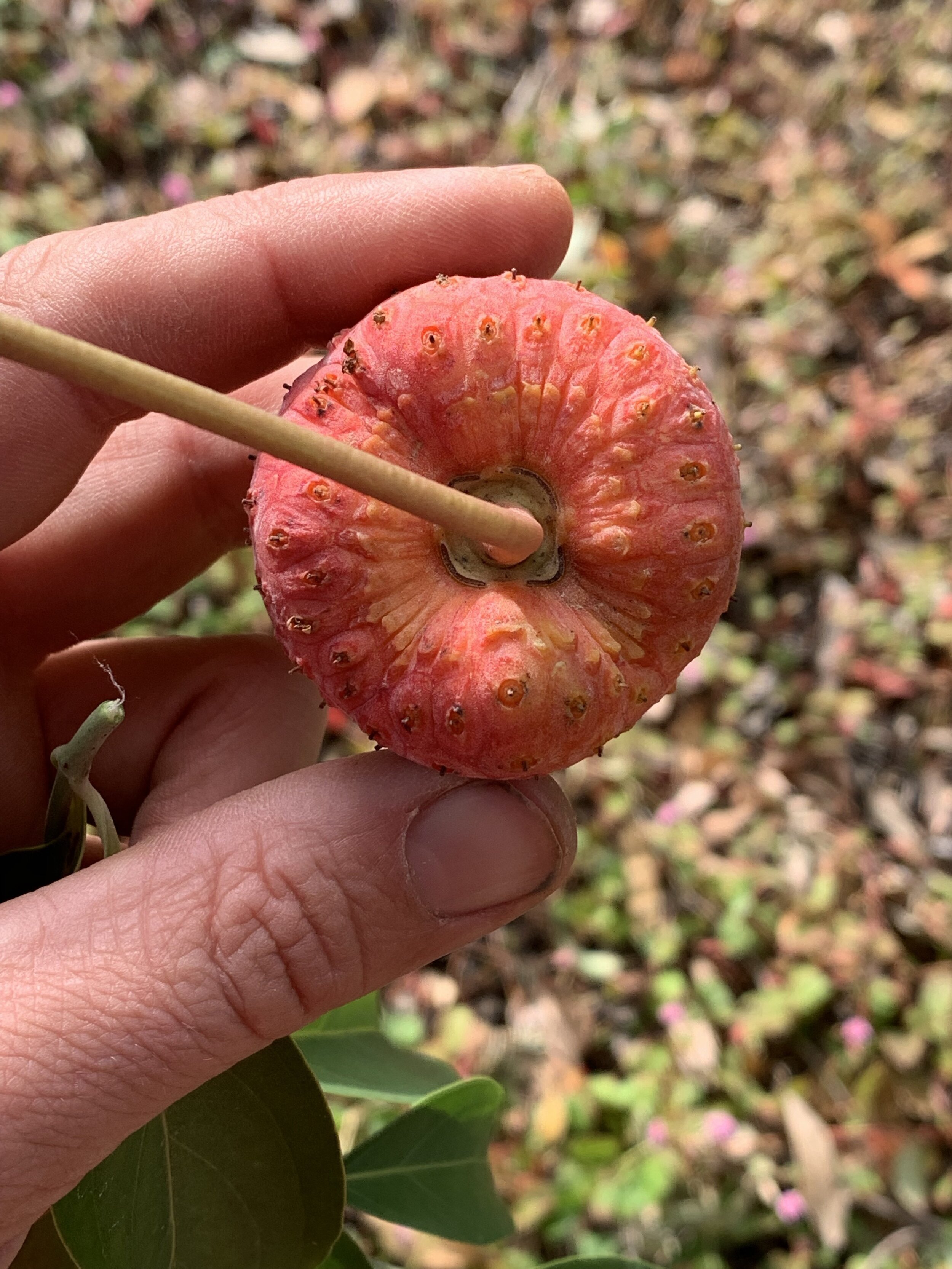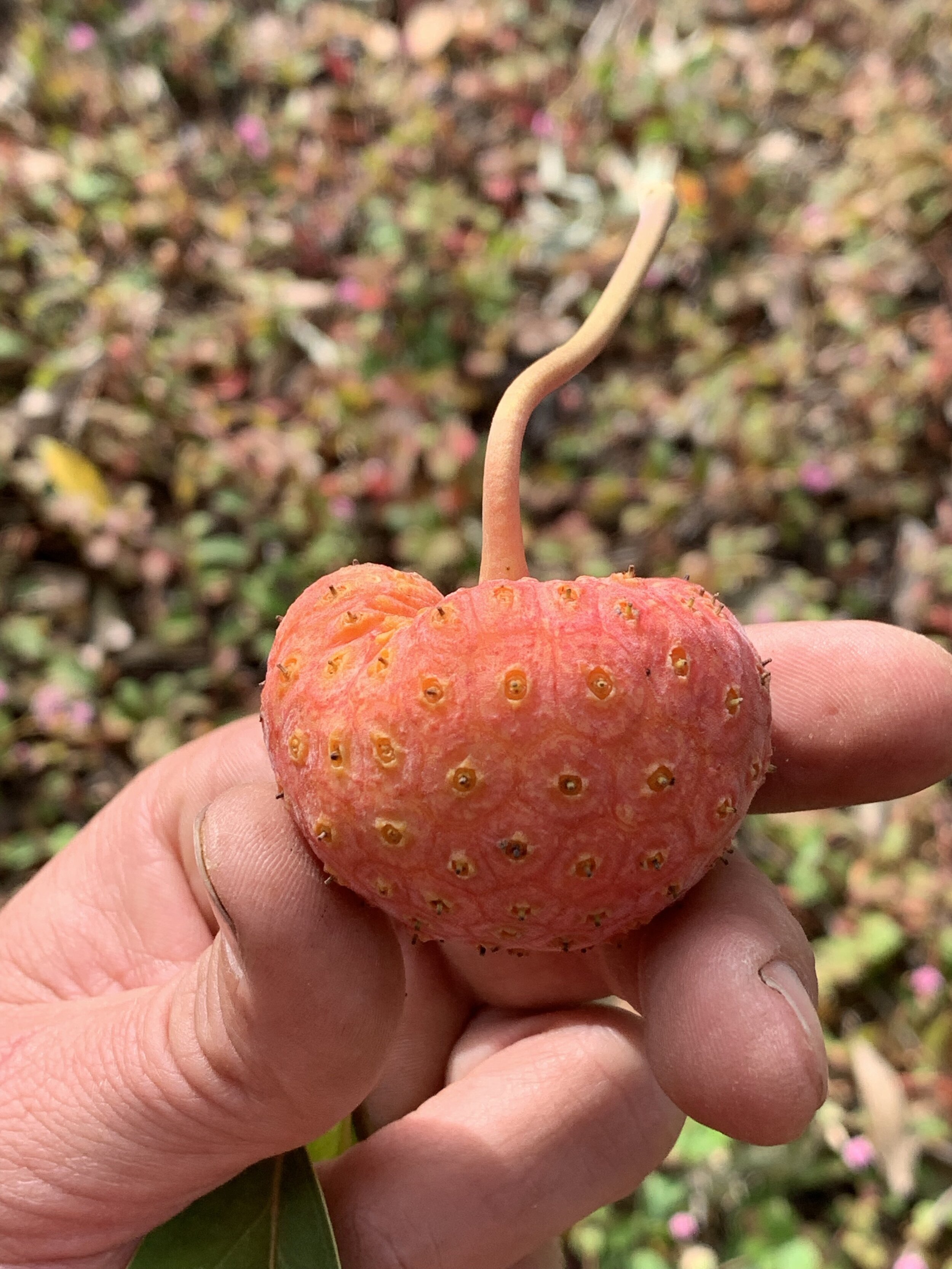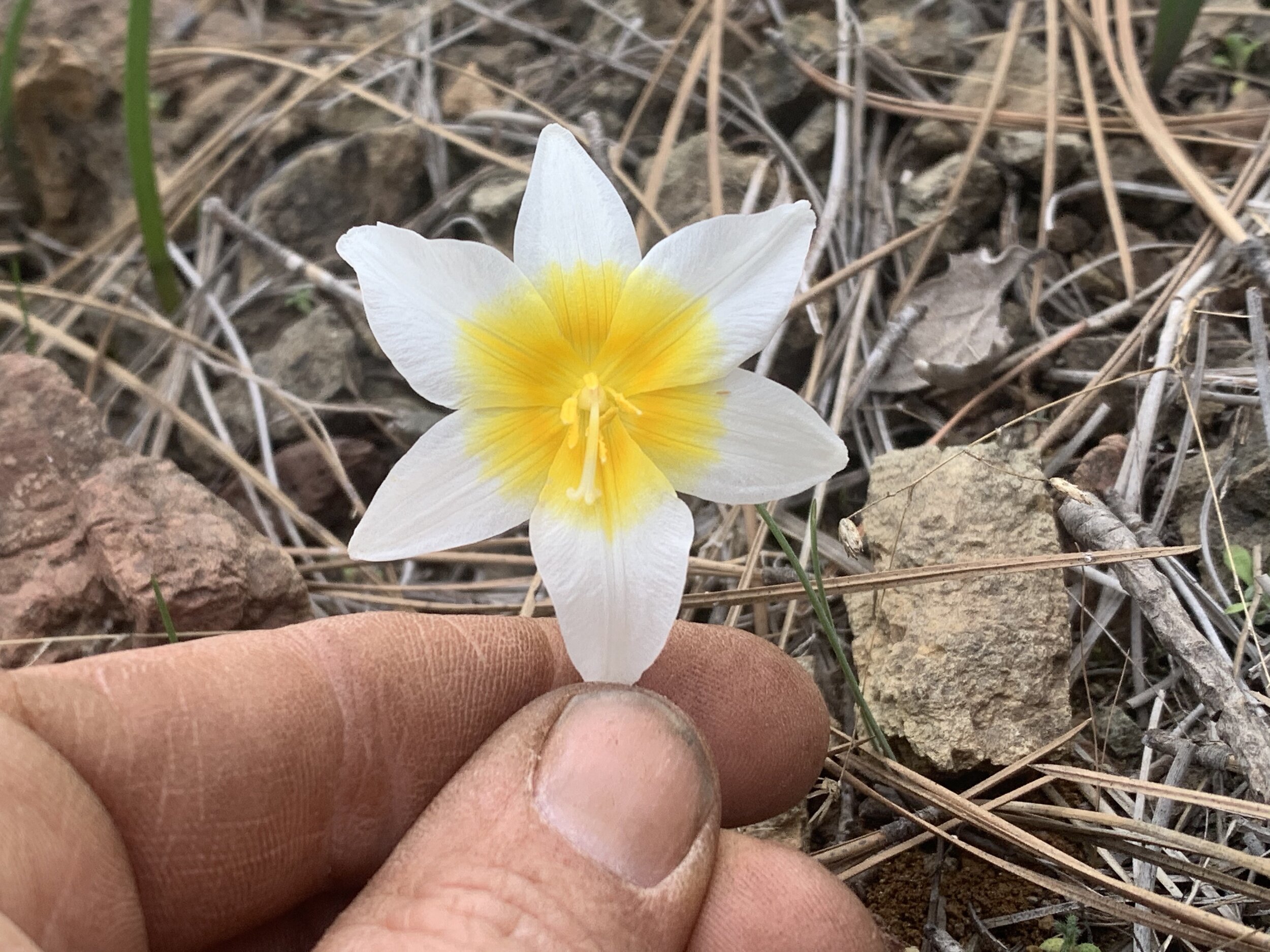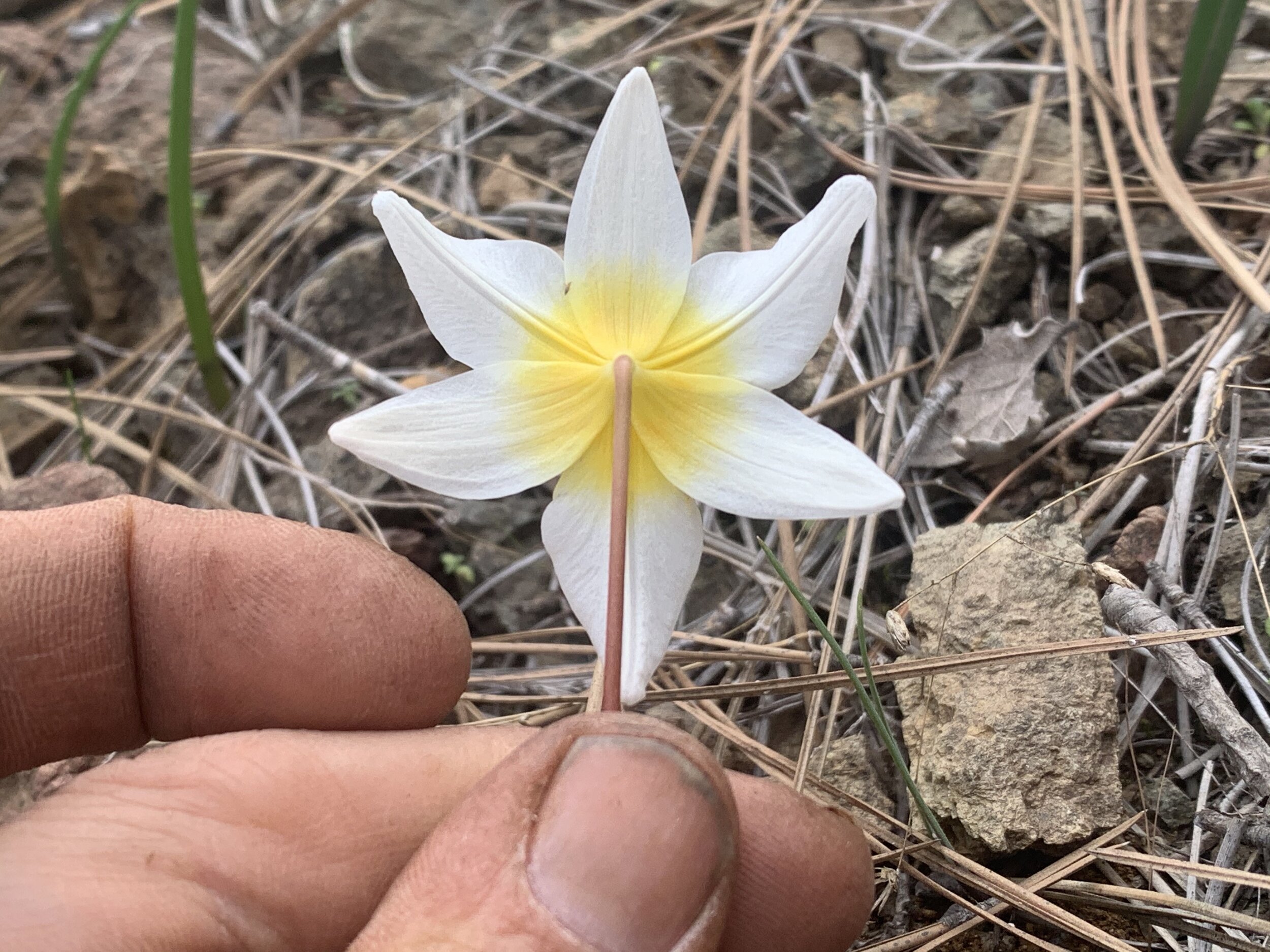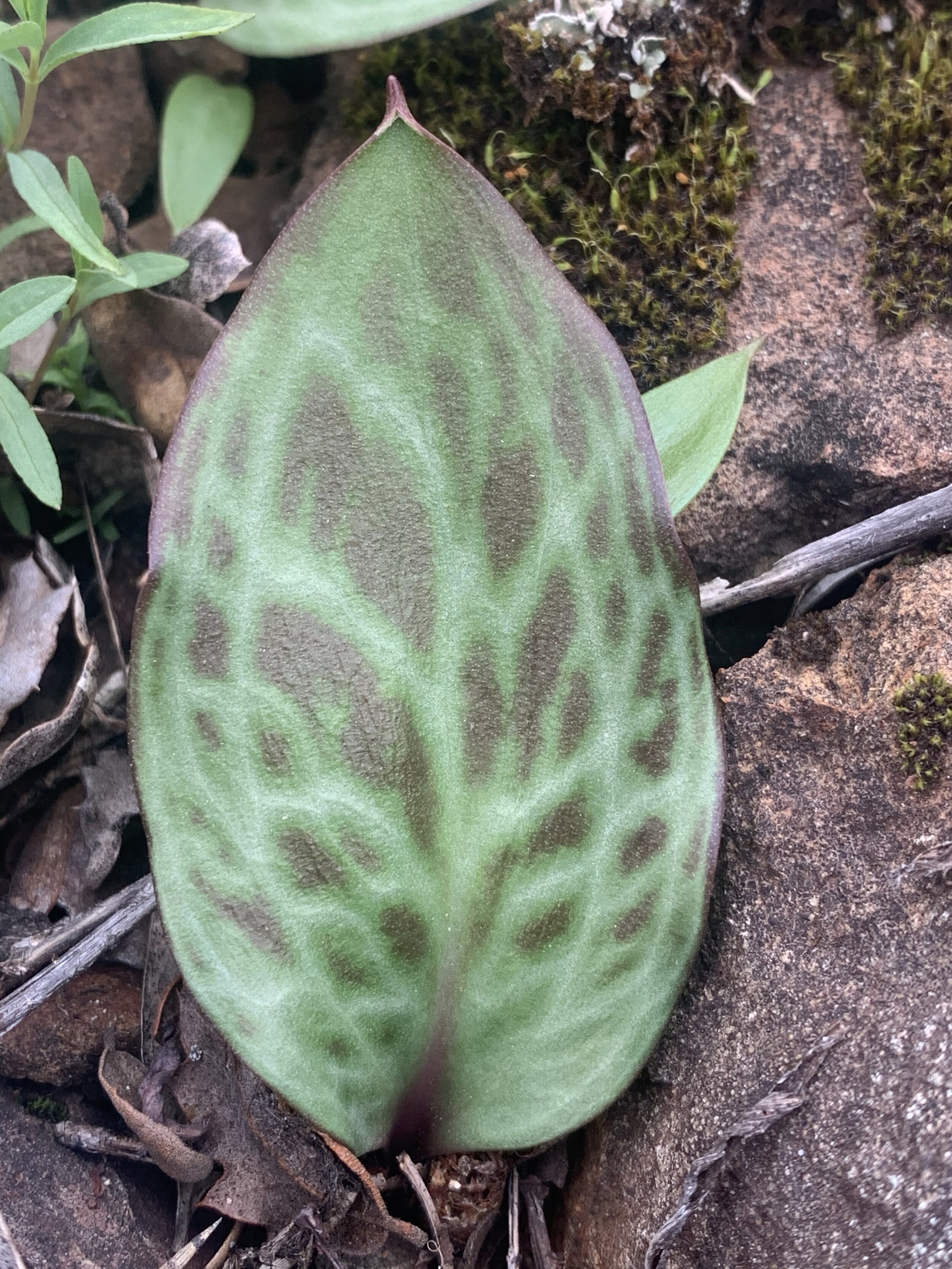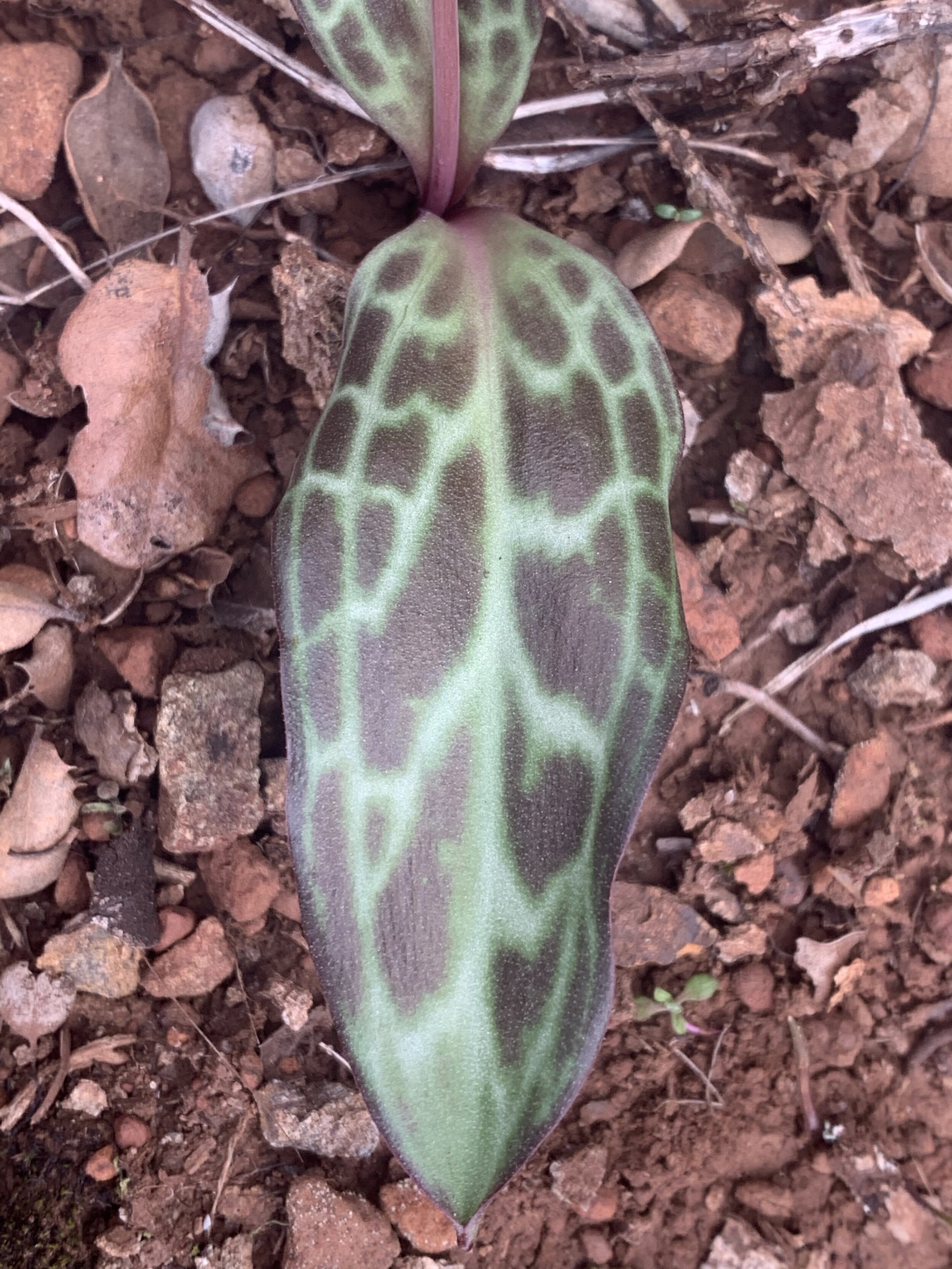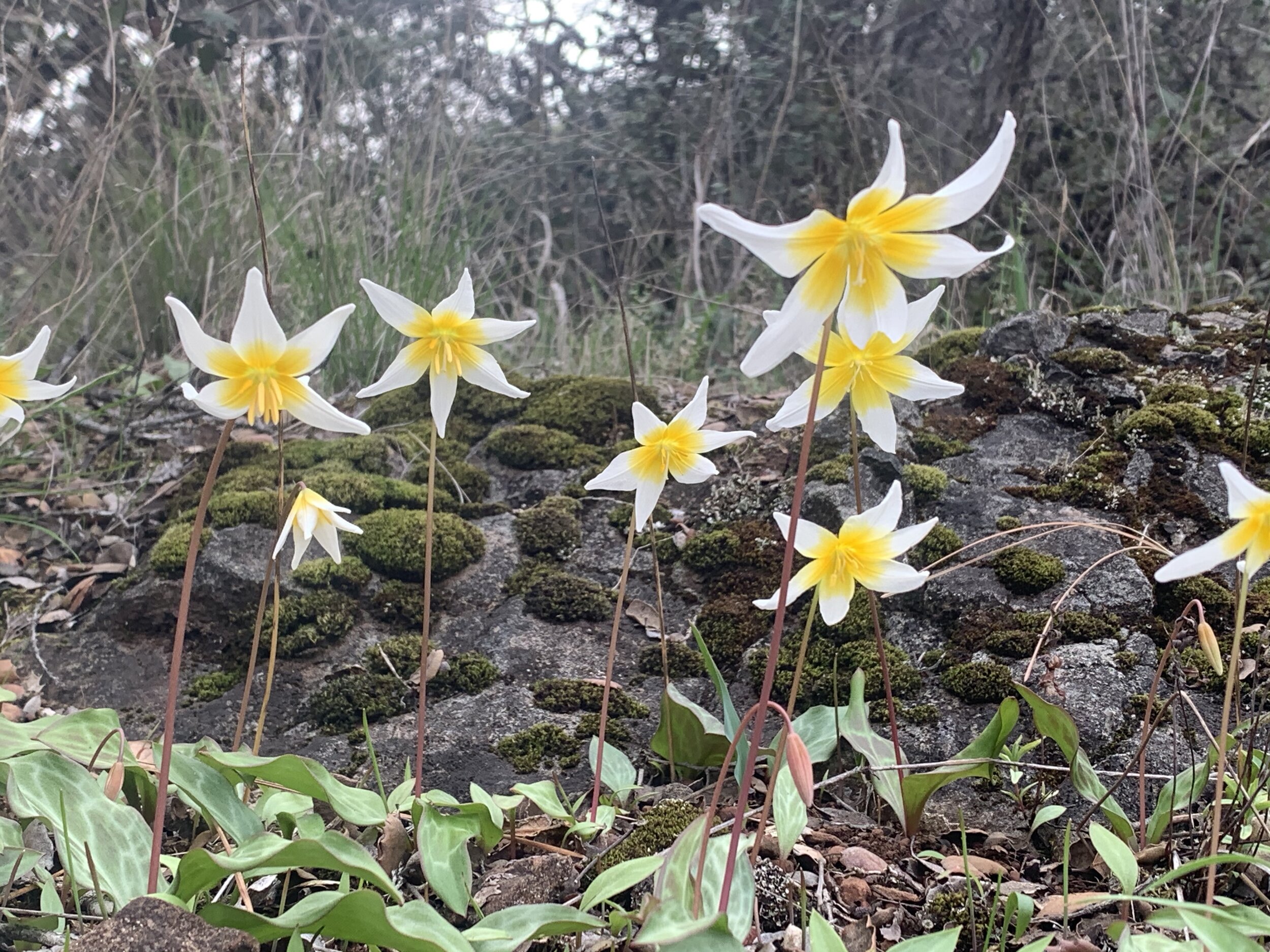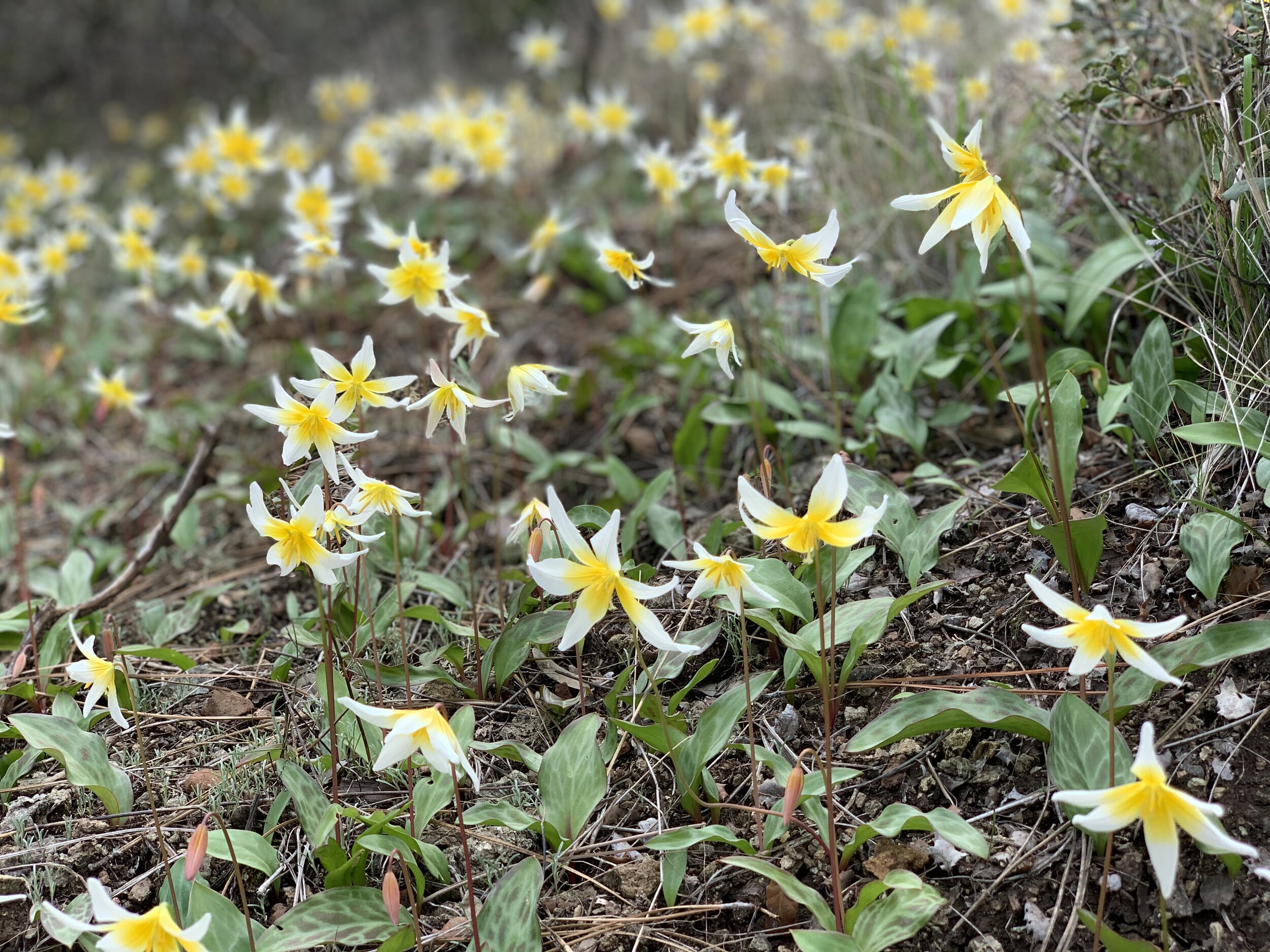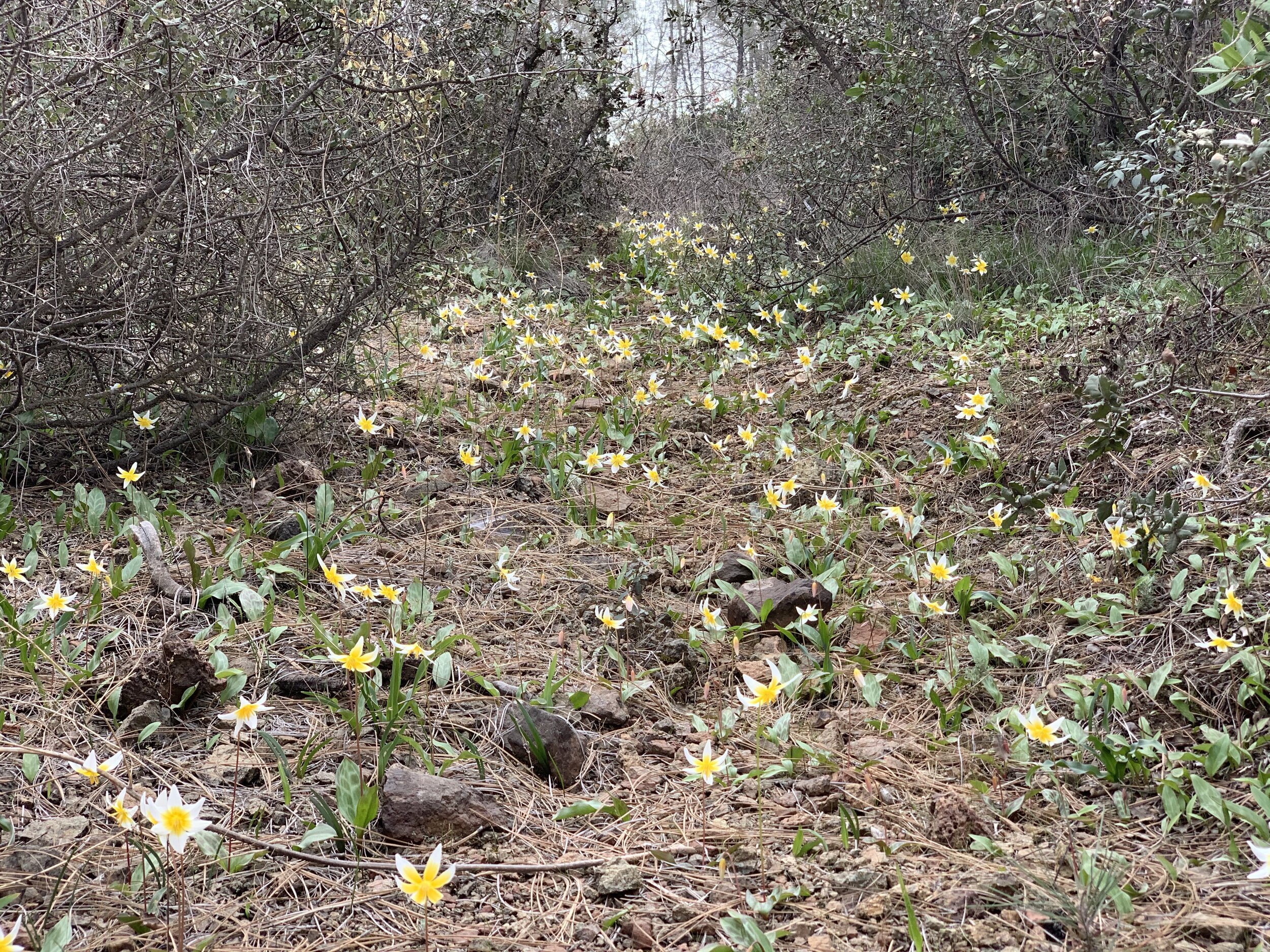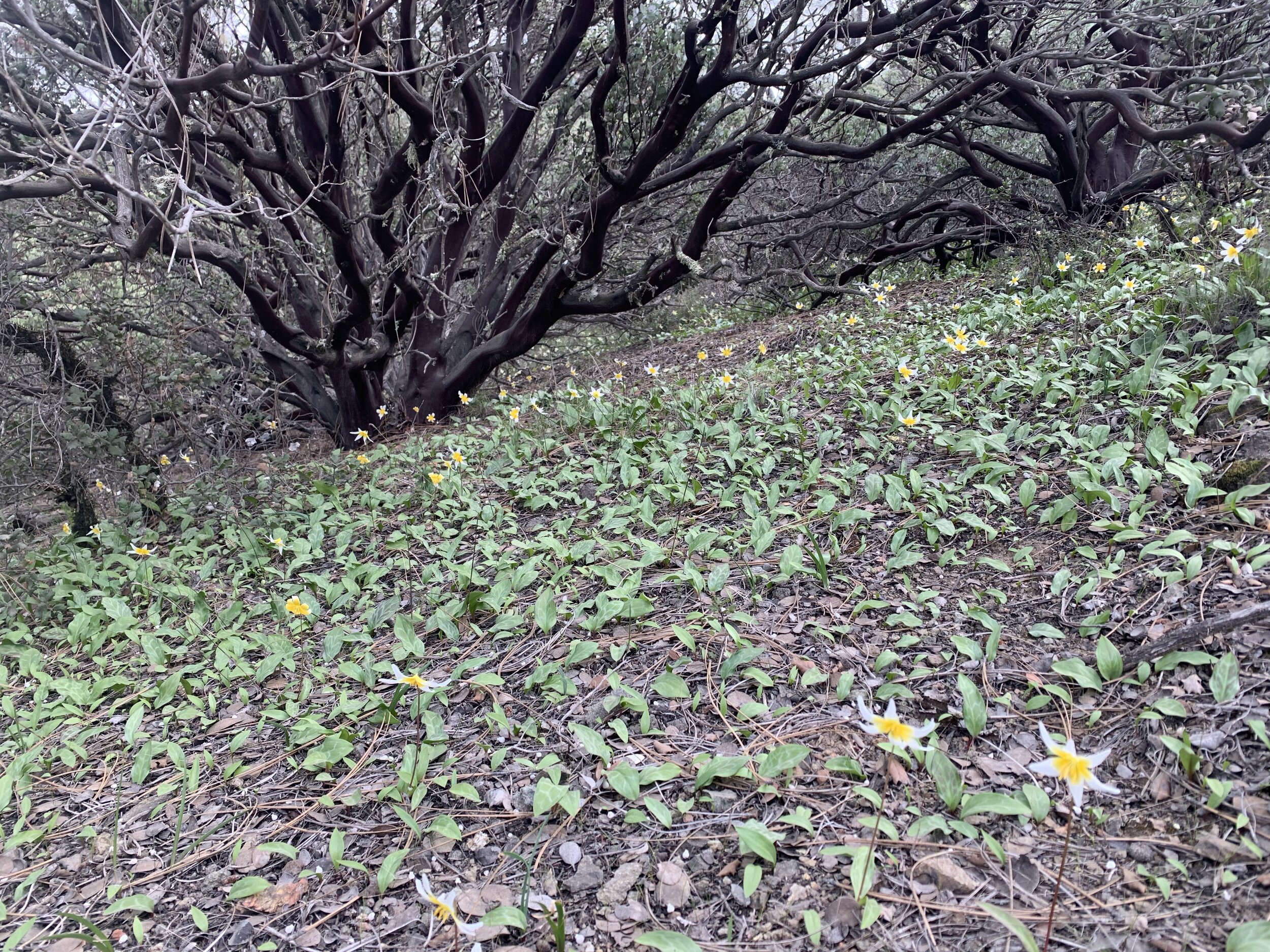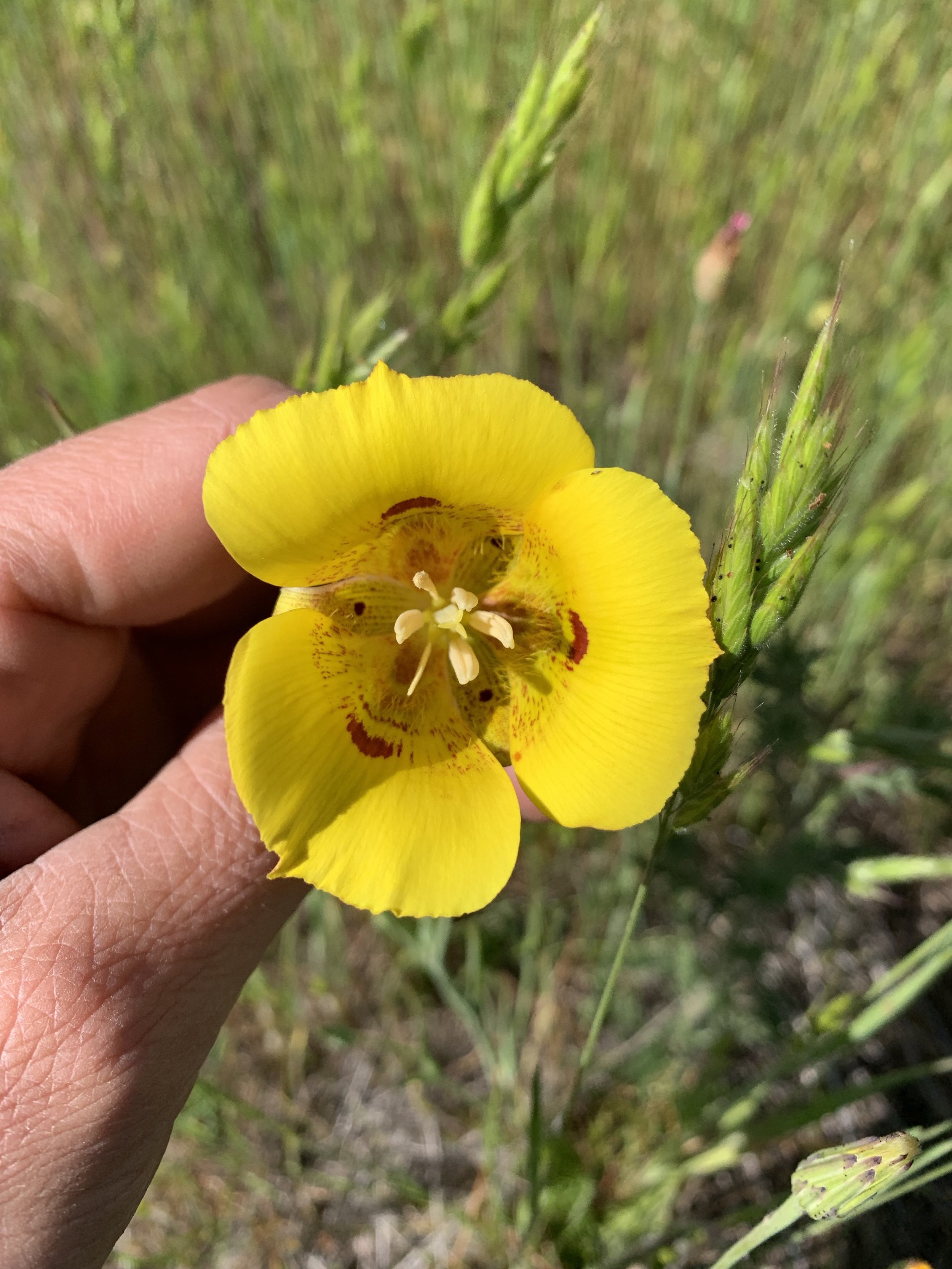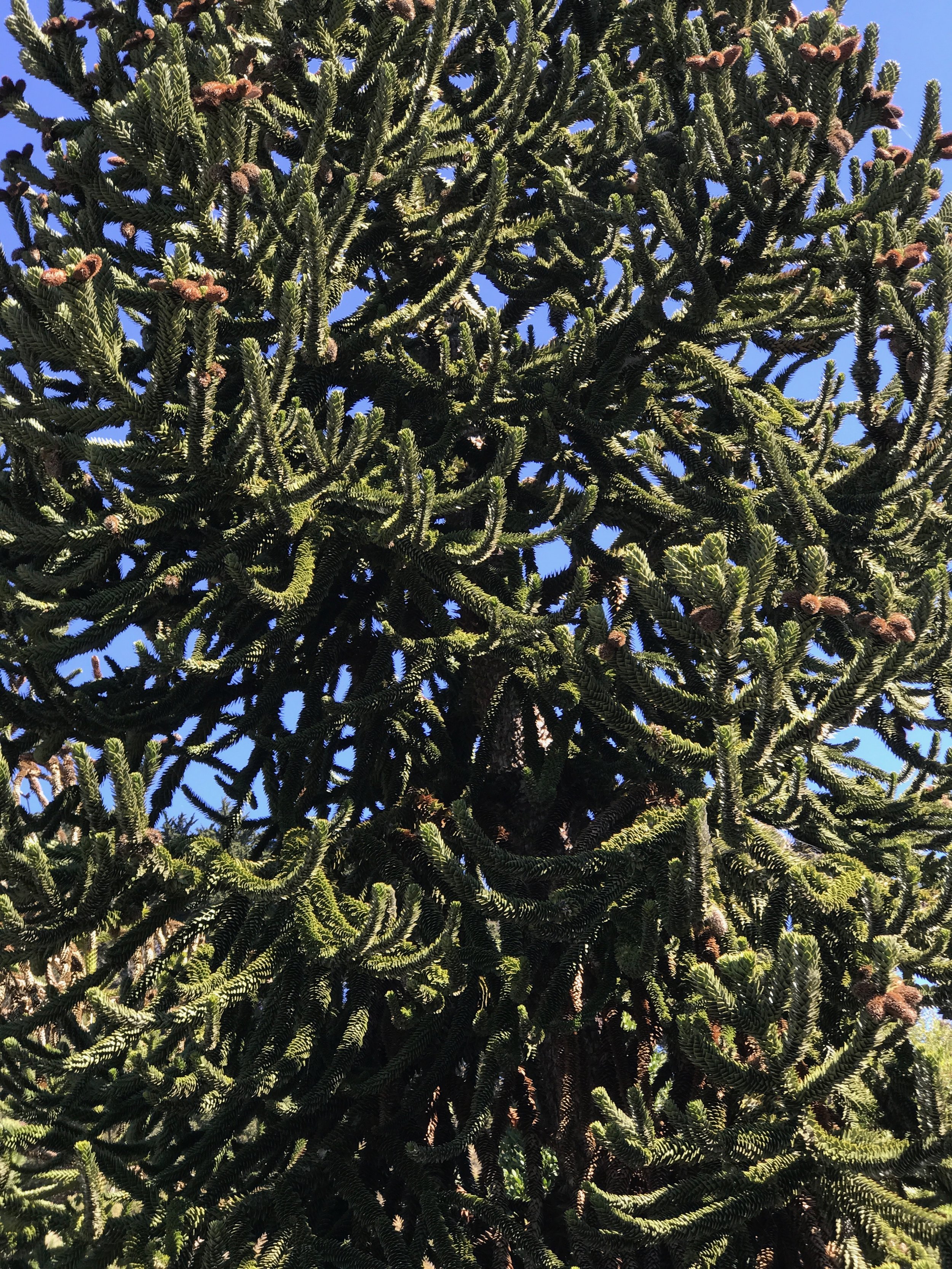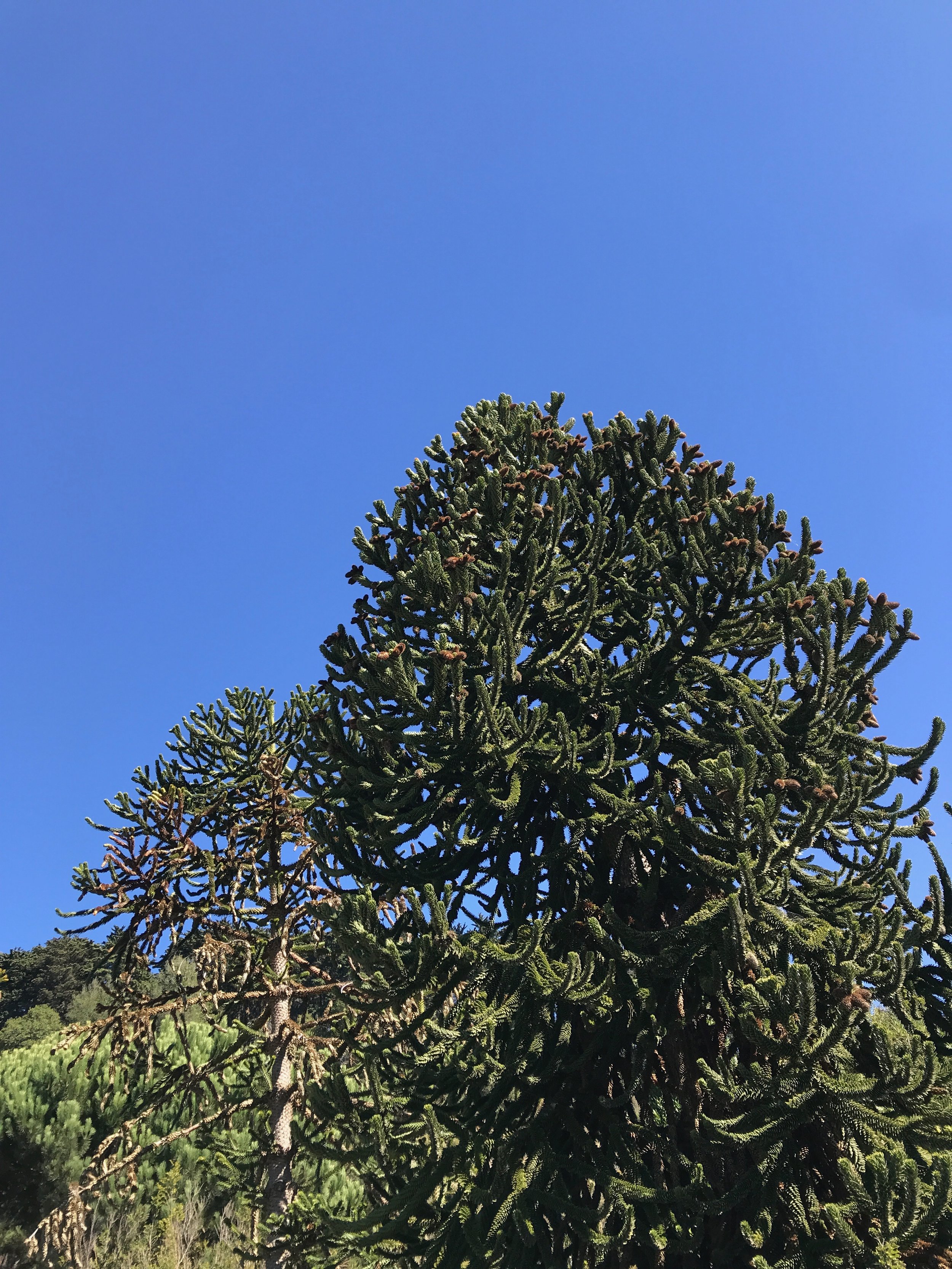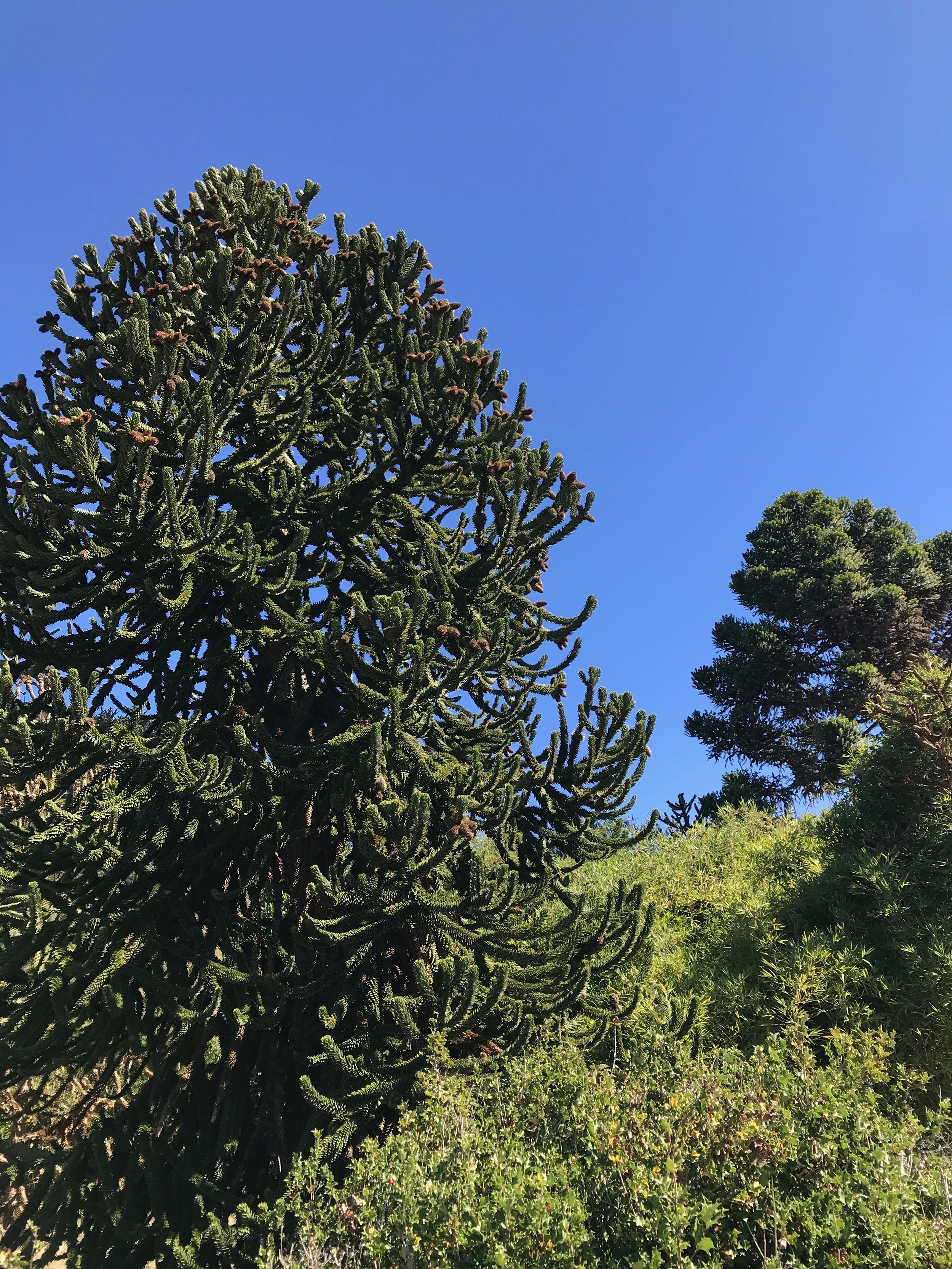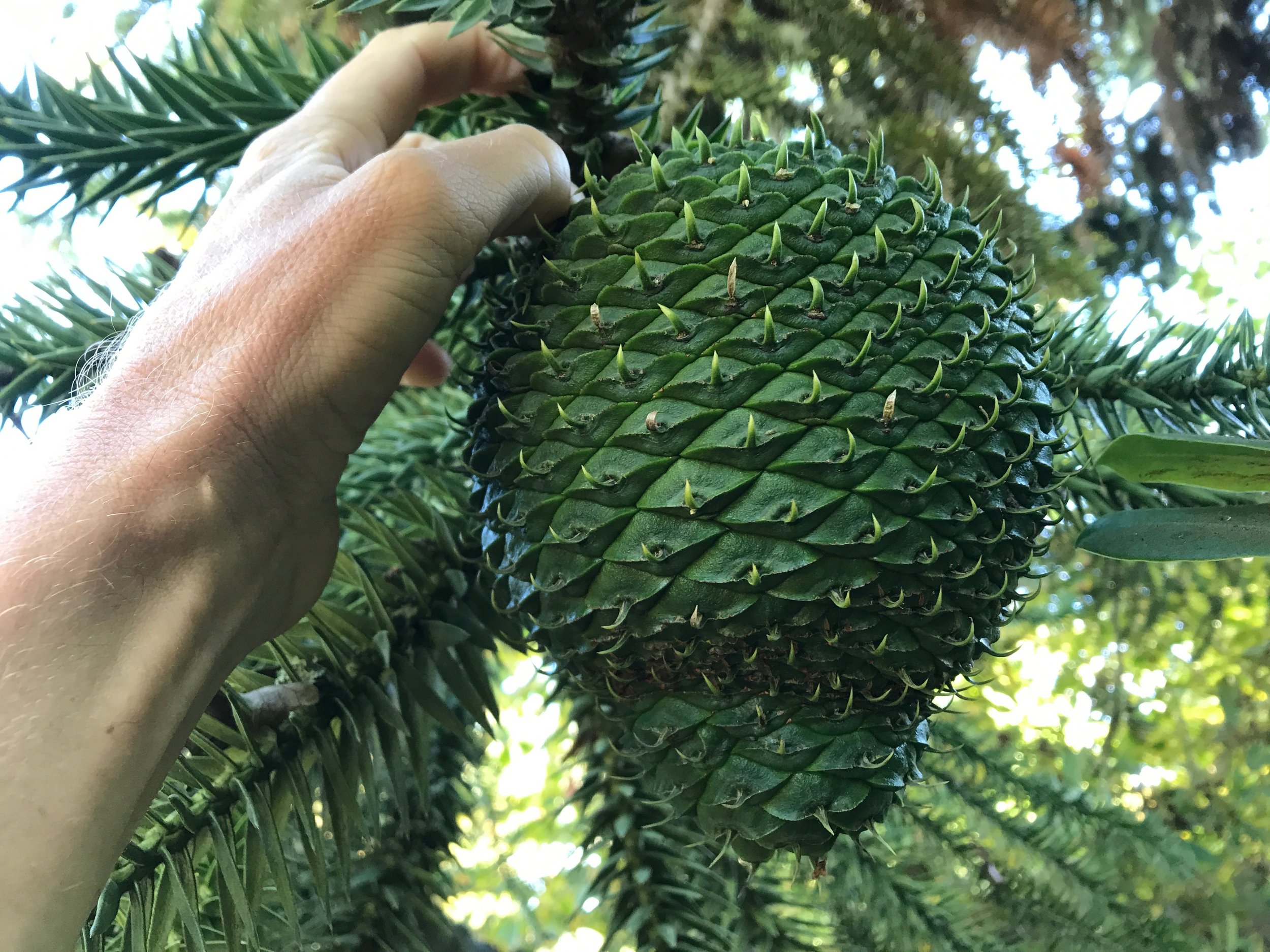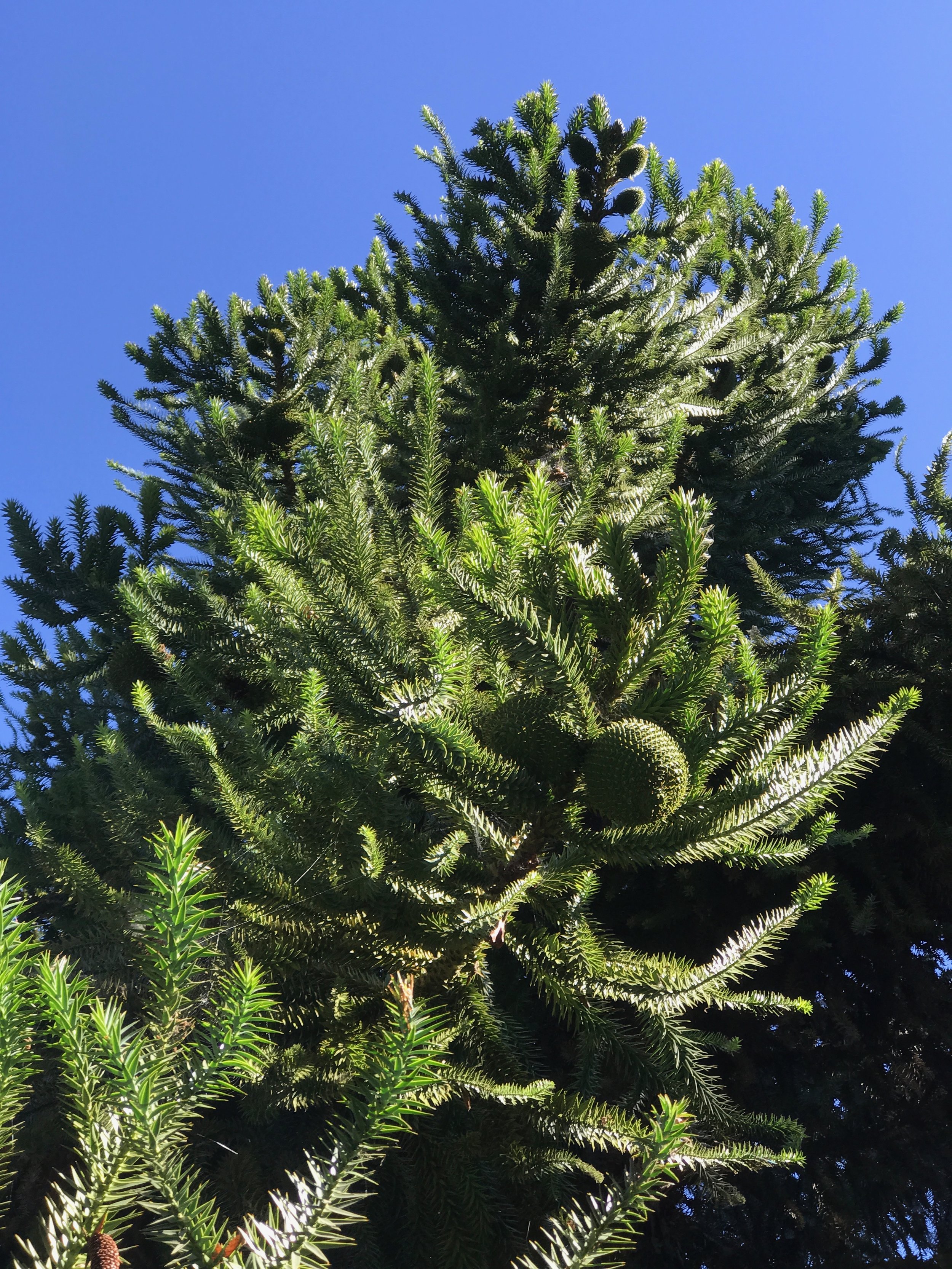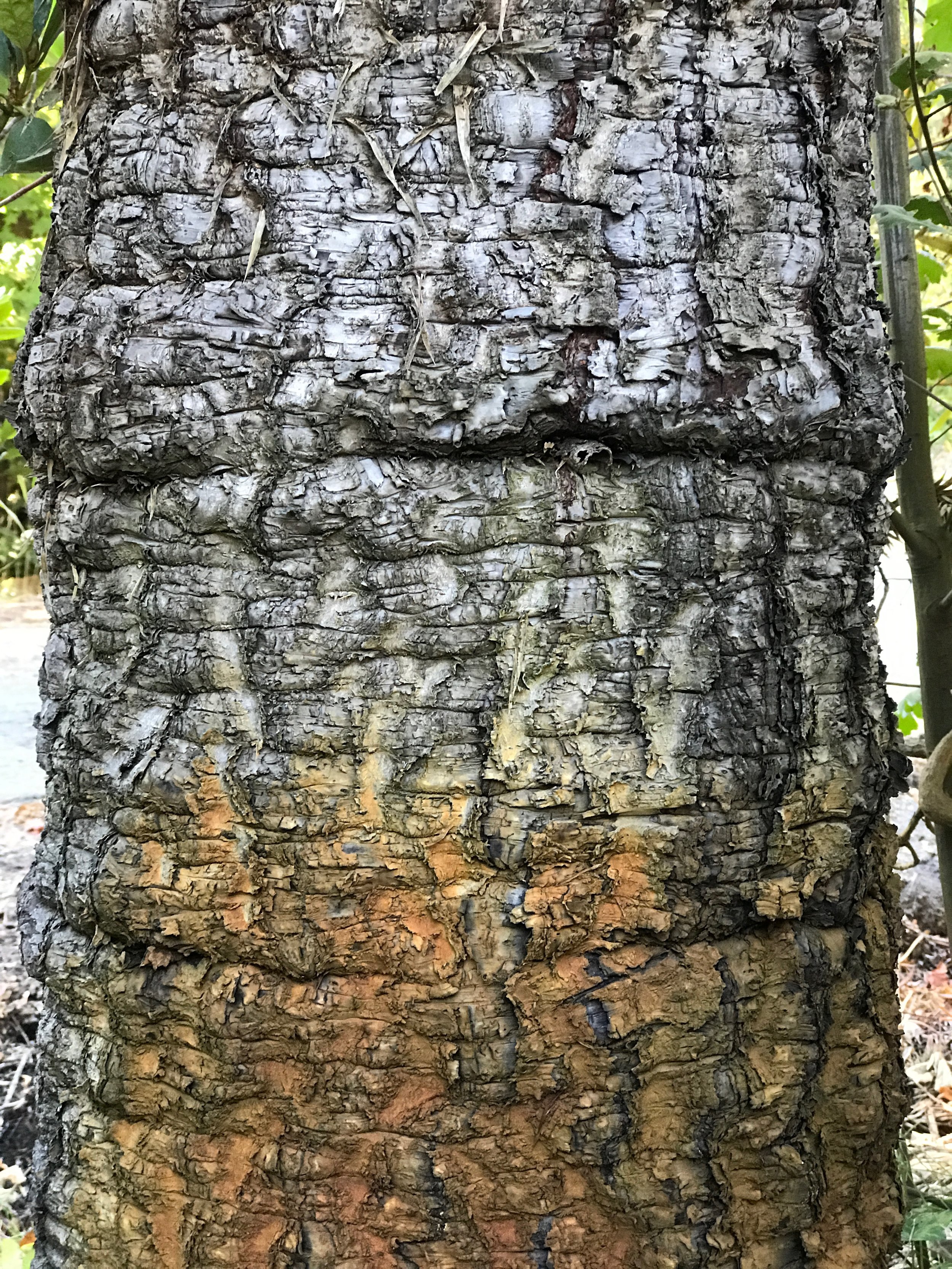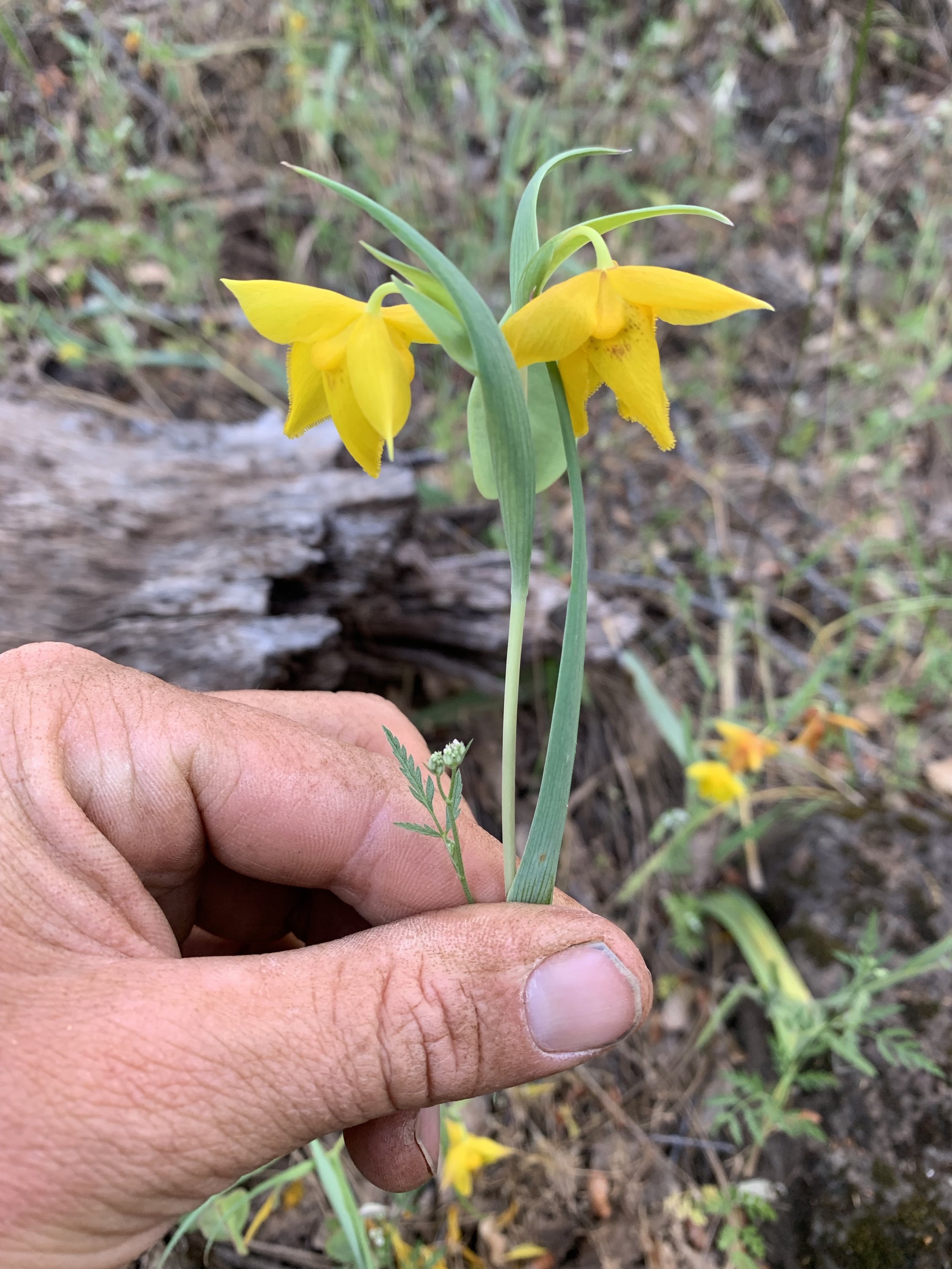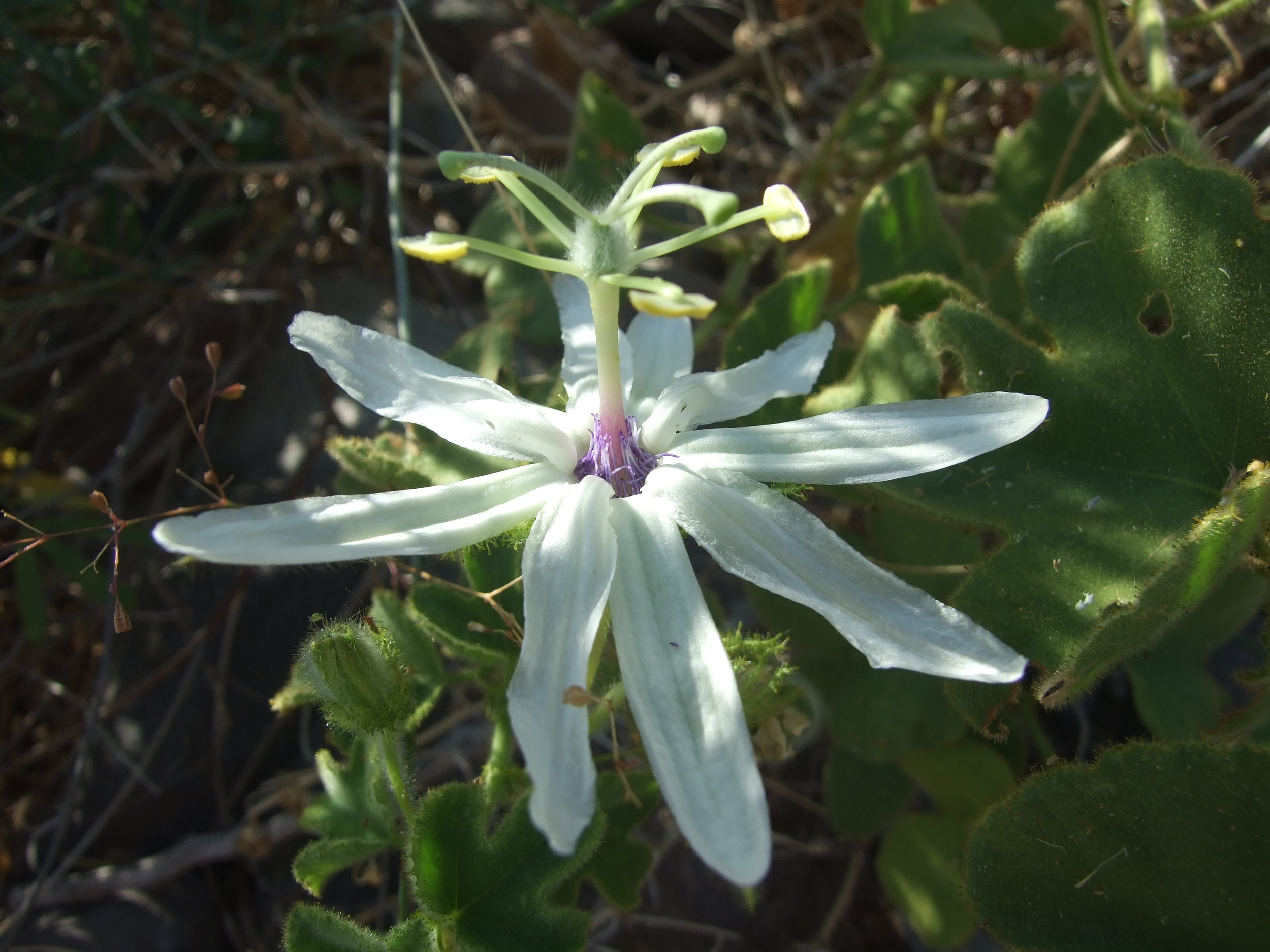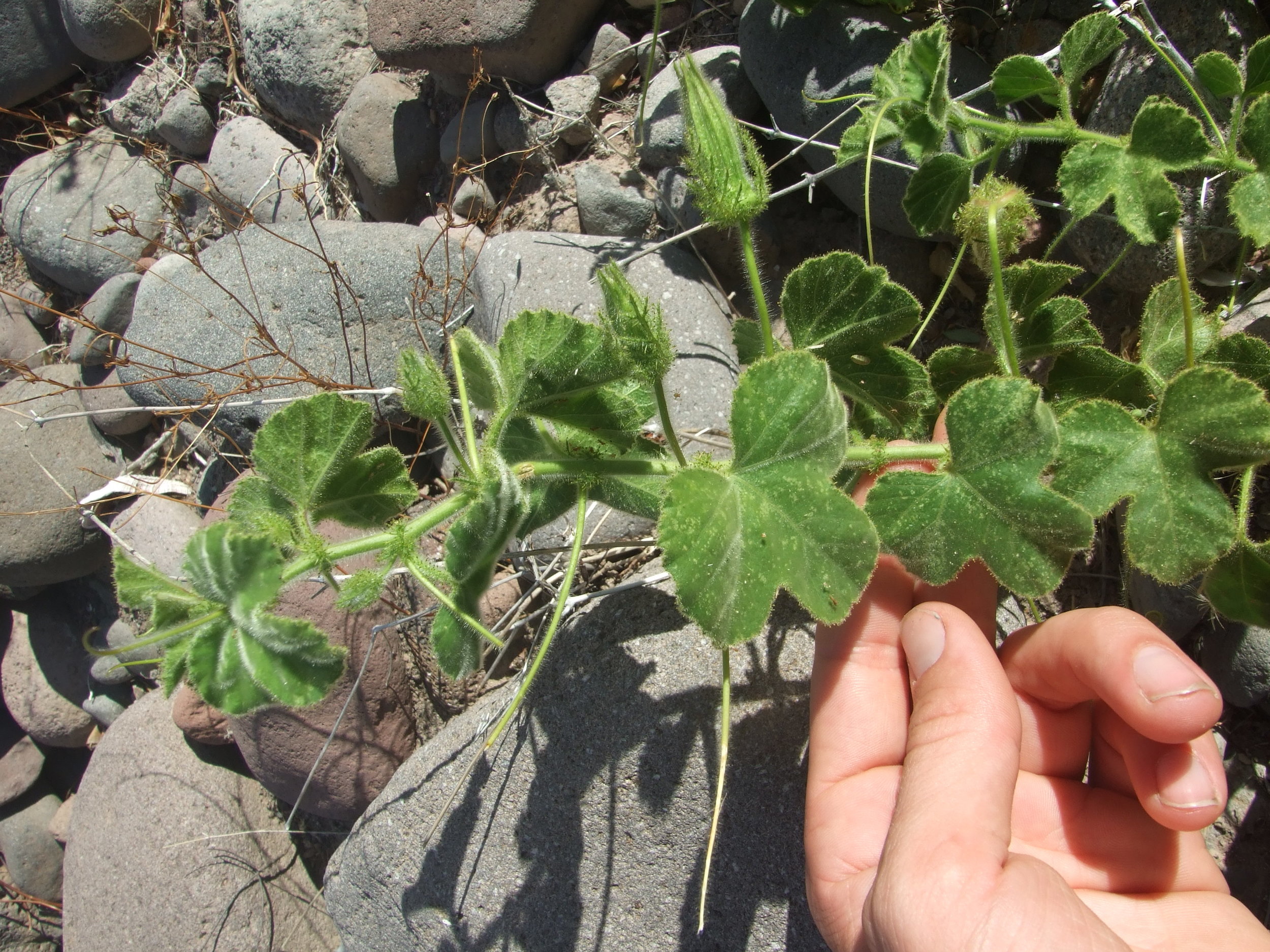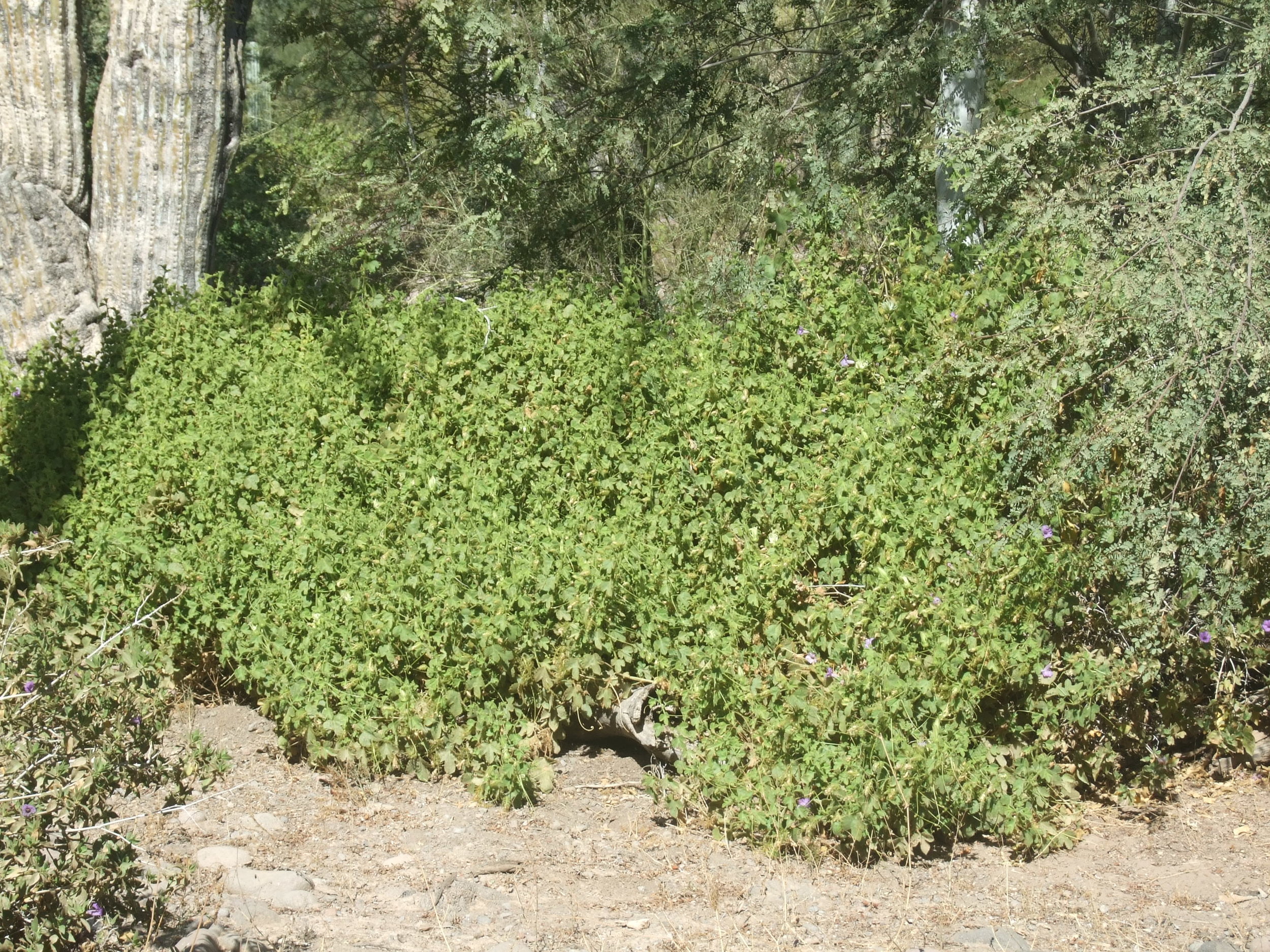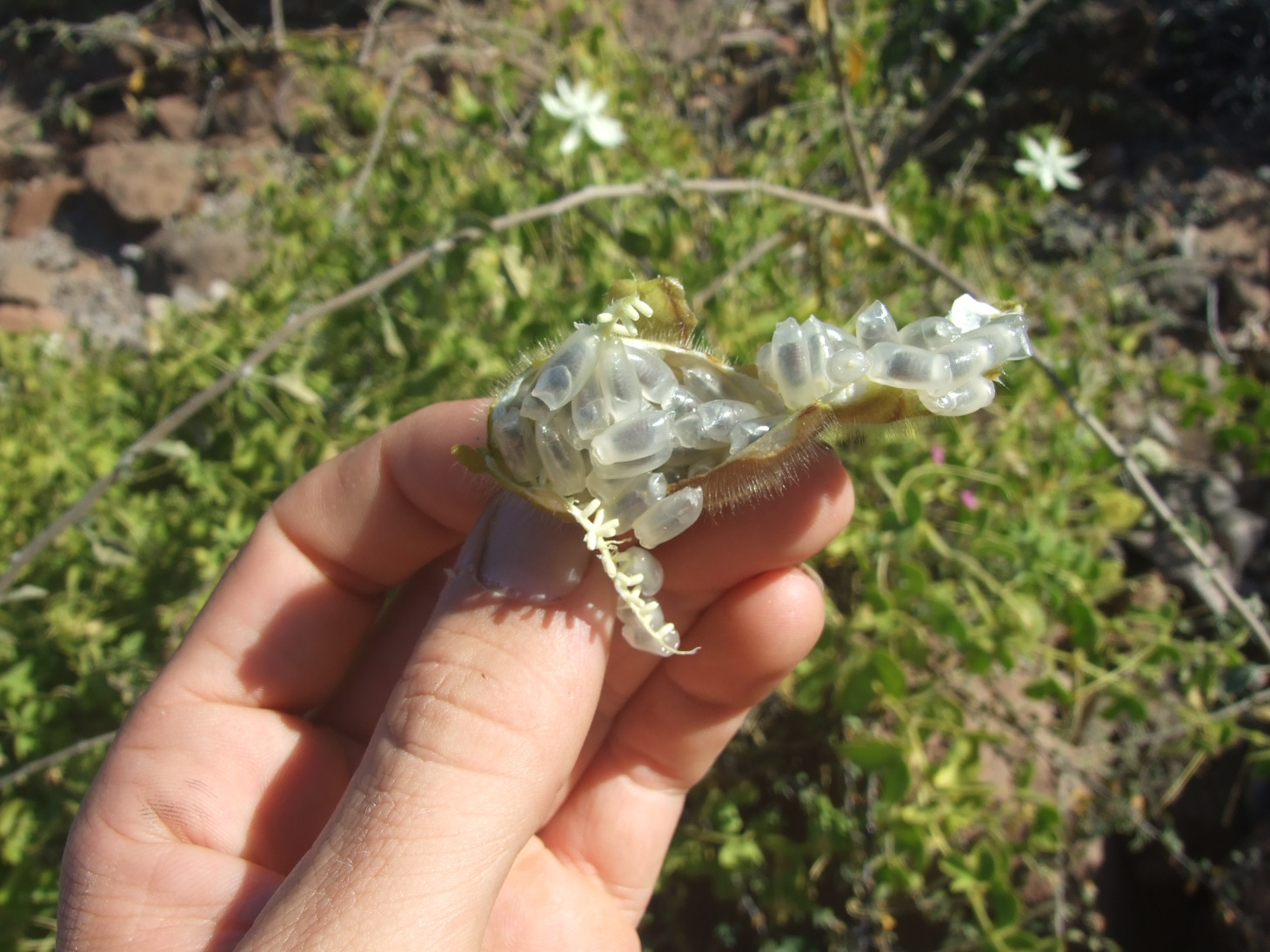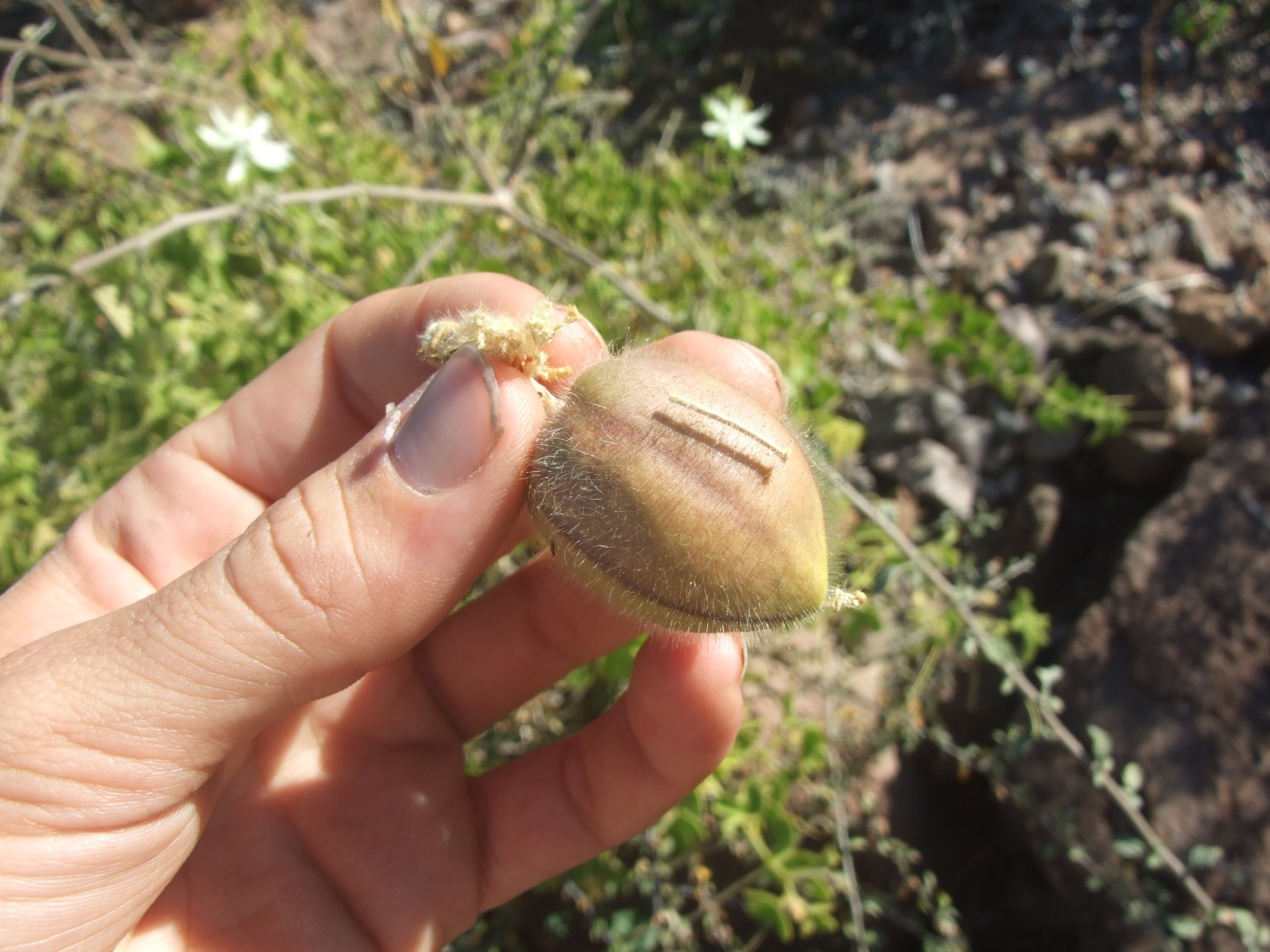Cornus Kousa - a beautiful small tree native to east Asia, Korea, China and Japan. Trees bear an edible fruit. The thin fruit rind is best discarded as it imparts a bitter taste. The custard-like pulp can be eaten when ripe or used in jams or sauces. The fruit is not widely eaten but can be seen used as a landscape tree, in botanical gardens, etc.
Erythronium oregonum - California Fawn Lily
Erythronium californium is a herbaceous perennial bulb native to Northern California. I took these photos in Lake County where the highly scented flowers appear in full bloom at the end of February through March. numbering in the many thousands.
The bulbs, along with many other regional species, were an important food source for indigenous peoples. The bulb populations we see today are remnants of previously managed and far more extensive traditional food and land management systems.
The area depicted in these photos consists of semi-dense chaparral consisting primarily of Manzanita, Heteromeles, and Quercus (duration) along with Umbellaria californica, CThe Erythronium appears in profusion, as shown below, in the understory. The bulb seems to co-exist along side a healthy gopher population, which, reportedly, can aid in the dissemination of bulblets .
Other important genera of edible neophytes widely consumed in pre-contact California include Allium, Brodiaea, Camassia, Chlorogalum, Calochortus, Dichelostemma, Lilium, Lomatium, Perideridia, Sanicula, and Triteleia.
Calochortus luteus
Araucaria araucana - Monkey Puzzle tree
Araucaria anguvstifolia, another member of the pan-global Araucariaceae family, many of which have edible seeds and multiple other ethnobotanical uses.
Native to It is native to central and southern Chile and western Argentina. A. araucana is the national tree of Chile. Its conservation status was changed to Endangered by the IUCN in 2013 due to the dwindling population caused by logging, forest fires, and grazing.
The large seeds, or pinions, are edible can be consumed, prepared in a wide variety of ways. The tree, however, does not yield seeds until it is around 30 to 40 years old, which discourages investment in planting orchards (although yields at maturity can be immense); once established, it can live possibly as long as 1,000 years.
Araucaria angustifolia - Para pine, Brazilian pine, Candelabra tree
Calochortus venustus - White mariposa lily
Calochortus venustus flower
Calochortus venustus flower.
Calochortus amabilis - Golden fairy lantern
Calochortus amabilis flowers.
Calopchortus amabilis, another California native flowering bulb. This is a stout branching plant with bright yellow flowers with a triangular outline.
The plant prefers higher levels of shade, and soil humus rich in organic matter, however it grows in the wild in a wide variety of conditions, including full sun, rocky hillsides, chaparral and Serpentine soils. .
In the wild the plant can be found along the North Coast Ranges from Solano and Marin Counties to Humboldt an Colusa County.
As with the bulbs of many Calochortus species, C. amabilis bulbs were traditionally eaten by Indigenous peoples in the region. Bulbs were baked or boiled and eaten in a similar way as sweet potatoes. Large swaths of land were carefully sustainably managed over generations to provide supply of these delicious and nutritious bulbs.
Young seed pods on Calochortus amabilis
Calochortus amabilis flower close-up.
Edible Condiment Leaves of Southeast Asia
The following is a list of species whose leaves are used as condiments in Southeast Asia. The list is not, by any means, complete, but includes some of the lesser known, more obscure species.
Acacia farnesiana, Cassie flower, Leguminaceae
Achronychia laurifolia, Ketiak, Rutaceae
Aegle marmelos, Bael fruit, Rutaceae
Allium odorum, Chinese chives, Liliaceae
Ancistrocladus extensus, Ox-tongue, Dipterocarpaceae
Antidesma ghaesembilla, Sekinchak, Euphorbiaceae
Begonia tuberosa, Tuberous begonia, Begoniaceae
Claoxylon polot, Rock blumea, Euphorbiaceae
Coleus tuberosus, African potato, Labiatae
Crypteronia paniculata, Sempoh, Lythraceae
Curcuma domestica, Turmeric, Zingiberaceae
Cymbopogon citratus, Lemon Grass, Graminae
Cyrtandra decurrens, Graminae
C. pendula, Rock sorrel, Graminae
Dendrobium salaccense, Cooking orchid, Orchidaceae
Derris heptaphylla, Seven finger, Leguminaceae
Elethariopsis sumatrana, Frangrant gingerwort, Zingiberaceae
Eugenia polyantha, White kelat, Myrtaceae
Evodia roxburghiana, Sour-relish wood, Rutaceae
Gymura procumbens, Akar, Compositae
Homalomena graffithii, Itch grass, Araceae
Hornstedtia, Tepus, Zingiberaceae
Horsfieldia sylvestris, Pendarahan, Myristicaceae
Kaempferia galanga, Chekur (Galangal), Zingiberaceae
Kaempferia rotunda, Kenchur, Zingiberaceae
Leucas lavandulifoia, Ketumbak, Labiatae
L. zeylanica, Ketumbak, Labaiatae
Limnophila aromatica, Swamp leaf, Scrophulariaceae
L. villosa
L. conferta
L. pulcherrima
L. rugosa
Lycium chinese, Kichi, Matrimony vine, Solanaceae
Lycopersicum esculentum, Tomato, Solanaceae
Medinilla crispata, Medinilla, Melastomataceae
M. hasseltii
M. radicans
Mentha longifolia, Longleaf mint, Labiatae
Murraya koenigii, Curry-leaf tree, Rutaceae
Nauclea esculenta, Pincushion, Rubiaceae
Ocimum canum, Hoary basil, Labiatae
Oenanthe javanica, Shelum, Umbelliferae
Ottelia alismoides, Pojnd lettuce, Hydrocharitaceae
Oxalis corniculata, Sorrel, Oxalidaceae
Pilea melastomoides, Sweet nettle, Urticaceae
Piper lolot, Pepper leaf, Piperaceae
P. caducibracteum
P. umbellatum
Pistacia lentiscus, Pistachio resin tree, Anacardiaceae
Pluchea indica, Indian sage, Comppositae
Polygonum hydropiper, Water polygonum, Polygonaceae
Staurogyne elongata, Cross flower, Acanthaceae
Trachyspermum involucratum, Wild celery, Umbelliferae
Citrus hystrix - Kaffir Lime
Passiflora palmeri - Passion flower, Granadilla, Sandia de la Passion
Here are some photos of the desert native Passiflora palmeri, photographed in Baja Sur, Mexico.
